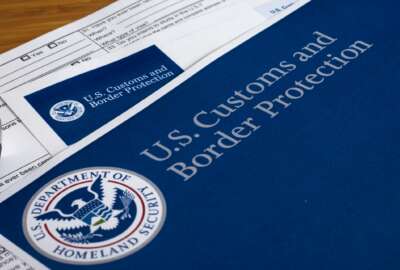
CBP makes its first ‘fast-track’ hire under analytics-driven recruiting system
Faced with longstanding hiring and recruiting challenges, Customs and Border Protection made its first hire earlier this month using its data analytics-driven...
Faced with longstanding hiring and recruiting challenges, Customs and Border Protection made its first hire earlier this month using its data analytics-driven “fast track” personnel system.
The agency currently spends an average of 300 days to bring a new agent or officer into the workforce, but CBP Commissioner Kevin McAleenan said the new hire was given an offer within 27 days of the recruiting process and brought onboard within 66 days.
The fast-track process, McAleenan explained at a Homeland Security and Defense Business Council meeting on March 11 in Tysons, Virginia, relies on digital marketing to find candidates in places the agency hasn’t recruited from in the past, and uses advanced analytics to determine who’s going to be a successful candidate.
“I’m not saying that everybody’s getting hired that fast yet, but the first thing we’re doing is trying to innovate within that cycle,” McAleenan said. “But how do we brand it, how do we communicate that you’re going to have an opportunity in our National Targeting Center or Office of Intelligence to use cutting-edge analytical tools” similar to those within the intelligence community.
The fast-track hiring process aims to reduce the time-to-hire to 120 days or less. Five years ago, it took the agency 460 days to bring new hires into the fold.
Fiscal 2018 marked the first time in years that CBP saw a net gain in front-line personnel, a trend the agency points to as an indication its hiring and retention strategy has improved.
But beyond the numbers, the agency is looking to hire younger applicants with an aptitude for controlling unmanned aircraft systems (UAS), also known as drones.
“I don’t think that’s well understood in the people that we’re going to try to hire. I think we do better at reaching those folks who want to be border patrol agents, who want to be outside, who like to ride horses,” McAleenan said. “They’re all over it. We get a ton of good candidates from that, but I’d like to also reach to the folks who are the hobbyists with their small UAS.”
The agency relies on drones to autonomously patrol sections of the border, which then gives operators feedback that can lead to arrests.
“You get to do your video game in real life,” McAleenan said. “Trying to communicate that to a young potential workforce, that will be the next step in sort of advertising who we are.”
The commissioner said CBP has also looked at ways to offer flexible pay authority for “certain key occupations” in its IT and operations divisions.
“Obviously cyber is essential,” McAleenan said. “Cyber is maybe the most competitive skill set out there for employers. I think they should be paid extra. I’ve always wanted to give them more and hire the best in the world.”
Despite issuing a partial stop-work order on a previous hiring contract with Accenture Federal Services, CBP remains open to working with the private sector “in the interim” to help the agency attract more cyber talent, McAleenan said.
“That is a huge gap, we’re obviously getting charged by the White House to do it better and to do more of it, and we don’t have the in-house capability to do everything that we want,” he said.
CBP’s tech hiring push comes at a time when the e-commerce boom has created a “sea of small parcels” coming into the United States, increasing the agency’s workload to screen for illegal drugs including fentanyl.
The volume of international packages has increased fivefold over the past 30 years, McAleenan said, but working through domestic international shipping partners, CBP last year also increased its seizures in the mail by 150 percent.
“For me, it’s a technology solution,” he said. “We need to be able to go out and ask industry to solve this problem the way they’re finding explosives in luggage before those bags are loaded onto aircraft. We need to be able to look at each parcel without opening it to determine if there’s threat material in there.”
Last month, CBP launched a call to industry on Challenge.gov to develop hardware and software tools aimed to help the agency detect drugs in unopened packages. If the venture is successful, McAleenan said the agency is open to kick off new challenges to help the agency detect other substances.
“It’s obviously proven successful in other environments in the private sector for other agencies,” he said. “This is our first big step toward it, so we’re going to give it a shot.”
Copyright © 2025 Federal News Network. All rights reserved. This website is not intended for users located within the European Economic Area.
Jory Heckman is a reporter at Federal News Network covering U.S. Postal Service, IRS, big data and technology issues.
Follow @jheckmanWFED
Related Stories





